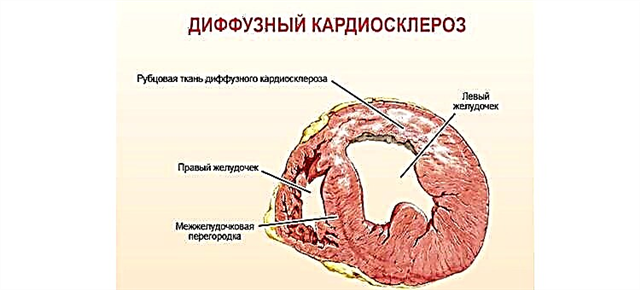With a narrowing of the vessels of the ear labyrinth, which leads to a disruption in the blood supply to the inner ear and an increase in the production of endolymph, Meniere's disease is diagnosed. The developing edema begins to stretch the labyrinth, puts pressure on the cells responsible for the spatial orientation of the body, which provokes poor coordination, dizziness, weakness in the legs and other symptoms of Meniere's disease.

Statistical estimates of the spread of pathology vary in the range of 20-200 cases per 100 thousand people, which makes it possible to classify Meniere's disease as a rare pathology. The largest number of cases was at the age of 30-50 years, but the entire recorded range is wider and is represented by the age of 17-70 years. For pediatric otolaryngology, the diagnosis of Meniere's disease is extremely rare.
History and specificity of the disease
The disease, which bears the name of the French researcher who first described it in the middle of the 19th century, has other, more rare, names: endolymphatic hydrops, labyrinth dropsy, endolymphatic dropsy.
The discoverer described it as a process of deterioration of the blood supply to the ear labyrinth due to narrowing of the blood vessels, leading to an increase in the production of endolymph, which stretches the labyrinth.
The modern view of the process considers several theories of cause-and-effect interactions, as a result of which pathology arises, which makes the problem of the mechanism of occurrence of the disease one of the most controversial in otorhinolaryngology. Initially, there were discussions about the allocation of a set of symptoms as a separate disease, since similar symptoms are recorded in many other diseases. However, in the case of them, the symptoms disappeared as they were cured. Only the Swedish International Congress finally determined the status of pathology.
As a result, Meniere's disease is considered to be a set of periodic symptoms arising from endolymphatic hydrops, characterized by unilateral weakening of hearing, followed by damage (without visible etiology) of the second ear. In addition, among the dominant symptoms are:
- vestibular dysfunction,
- hemorrhage in the inner ear,
- sudden hearing loss and extraneous subjective acoustic sensations in the form of ringing, noise, hum.
Meniere's syndrome is a complex of symptoms of a primary disease, in which an increase in pressure in the labyrinth is secondary. Meniere's syndrome also includes cases of systemic dizziness, which are not accompanied by hearing loss. Primary treatment aimed at correcting the underlying pathology:
aimed at correcting the underlying pathology:
- labyrinthitis (inflammation of the labyrinth),
- arachnoiditis (inflammation of one of the membranes of the brain),
- brain tumors, etc.
The irreversible stage of the disease is incurable, and although this condition does not threaten the patient's life, over time he completely loses his ability to work.
Reasons for development
Since there is still no exhaustive indisputable definition of the causes and mechanisms of the development of pathology, the question of what it is - Meniere's disease and syndrome (that is, what kind of disease it is and what its nature is) is debatable. There are several assumptions regarding provoking factors:
- Viral theory. According to her, the syndrome is provoked by a viral infection (cytomegalovirus, for example), which triggers the autoimmune mechanism.
- Hereditary theory. Within the framework of the concept, autosono-dominant inheritance is assumed, in favor of which cases of family inheritance of the syndrome speak.
In a number of studies, disorders of the vascular system and water-salt metabolism, a lack of estrogen, ear injuries and head bruises are noted as trigger (triggering) factors. In addition, the dependence of the syndrome on allergies (sensitivity to allergens) has been recorded.
In general, all researchers agree that the development of endolymphatic dropsy is based on the accumulation of excess endolymph in the labyrinth, as a result of which the intra-labyrinth pressure increases. Moreover, if the pressure of the endolymph does not lead to rupture of the vestibular membrane, characteristic symptoms may not be observed at all. If a rupture occurs, the endolymph secret, rich in potassium composition, mixes with the peralymph, which leads to the swelling of the labyrinth. As a result of mixing, the vestibular nerve is excited, and afferent neurons of the fibers of the cochlear spiral ganglion die. In addition, the strong pressure of the endolymph interferes with the conduction of sound vibrations.
The accumulation of endolithma can be caused both by impaired circulation and absorption, and by an increase in its production. And the acute phase is caused by a sharp increase in intra-labyrinth pressure.
Classification
According to clinical symptoms, there are three forms of labyrinth dropsy:
- Cochlear. About half of all diseases begin with hearing impairment and belong to this form.
- Vestibular. 20% of manifestations begin with dysfunction of the vestibular apparatus.
- Mixed (classical) form. 30% of the total number of diseases begin with a simultaneous disorder of the auditory and vestibular functions.
In the course of the development of endolymphatic hydrops, the exacerbation phase is replaced by the remission phase, characterized by the absence of seizures. Depending on the duration of each of these phases, the severity is classified:
- Lightweight. There are frequent, but short-lived acute phases, between which many months (sometimes many years) breaks are recorded, during which the patient fully maintains his working capacity.
- Average. Frequent attacks lasting up to 5 hours are characteristic.
- Heavy. There are long - more than 5 hours - daily or weekly seizures without recovery.
According to the mixed typology, there are:
- The neurological type, in which the symptoms are not pronounced, and the disease periodically worsens with the appearance of endolymphatic edema. Vestibular disorders occur in parallel with short-term hearing impairment.
- The neuritic type with frequent (sometimes continuous, without gaps) exacerbations is characterized by the manifestation of complete one-sided deafness.
- Hemorrhagic type, in which there is a total, but one-sided failure of the auditory and vestibular functions.
- The bilateral type is characterized by edema in one ear and the development of the disease, beginning with hearing loss, in the other.

According to the classification of I.B. Soldatov, reversible and irreversible stages are distinguished:
- Reversible is described as a syndrome:
- with light gaps between exacerbations,
- hearing loss, which is associated with damage to the sound-conducting mechanism,
- imbalance of a transient nature.
- The irreversible stage begins with the disappearance of the remission period and an increase in the duration and frequency of attacks. Hearing disorders occur both as a result of damage to the sound-conducting device and as a result of disturbances in the operation of the sound-receiving apparatus.
Diagnostics
The alternation of acute phases and periods of remission in combination with symptoms significantly simplifies the diagnosis of the otolaryngologist, therefore, during the examination, the doctor checks the degree of hearing impairment and the condition of the analyzer. To do this, apply:
- audiometry,
- acoustic impedance measurement, consisting of two studies - tympanometry and acoustic reflexometry, during which the mobility of the auditory ossicles is determined, as well as the state of the intra-aural muscles,
- a promontory test that detects problems with the auditory nerve,
- electrocochleography,
- tuning fork testing,
- otoacoustic emission - a technique that determines the ability of the cochlea to generate acoustic echoes in response to signals.
In order to exclude the neuroma of the auditory nerve, it is imperative to prescribe an MRI of the brain.
With the help of otoscopy and microotoscopy, the doctor excludes inflammatory processes, noting the absence of pathological changes in the tympanic membrane and external auditory canal.
Vestibular disorders are diagnosed using vestibulometry, stabilography, indirect otolithometry. The last technique consists in pouring into the ear canal:
- or cold (18C) water - and in this case nystagmus is observed towards the opposite ear,
- or warm (40C) water with observation of nystagmus towards the damaged ear.
 In the absence of nystagmus, a violation of the excitability of the labyrinth is noted.
In the absence of nystagmus, a violation of the excitability of the labyrinth is noted.
At the same time, an examination by a neurologist is prescribed, checking the state of the cerebral vessels using ultrasound, REG, and duplex scanning.
Measurement of endolymphatic pressure is done using a glycerol test. The technique consists in the fact that the patient takes a cocktail of water, fruit juice and glycerin (1.5 g of glycerol / 1 kg of body weight). If after 3 hours audiometry shows a 10 dB decrease in auditory thresholds at three or more sound frequencies (or 5 dB at all frequencies), the result is considered positive. If the auditory thresholds grow, the result is recognized as negative, which indicates the irreversibility of the pathological process in the labyrinth.
Despite its rarity, Meniere's disease has been diagnosed in some famous people. Among the famous surnames:
- Su Yu, a Chinese general in the People's Liberation Army, was hospitalized with this diagnosis in 1949 and then removed from his command.
- Ryan Adams, a musician from the United States, who interrupted his artistic career for 2 years, but returned to the stage.
- Alan Shepard, the first US astronaut, received the diagnosis in 1964. An experimental endolymphatic shunting operation enabled Shepard to return to service and, at the age of 47, make a second flight into space as the ship commander of the third American expedition to the moon.




